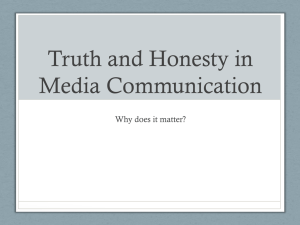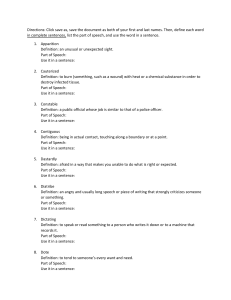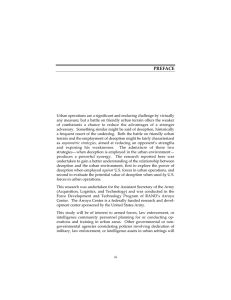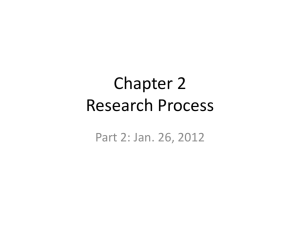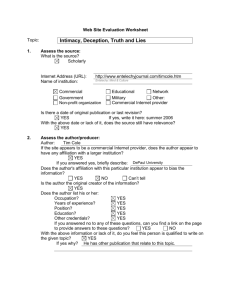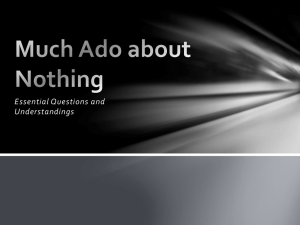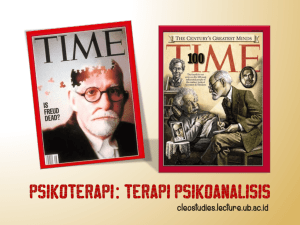CONCLUSIONS
advertisement
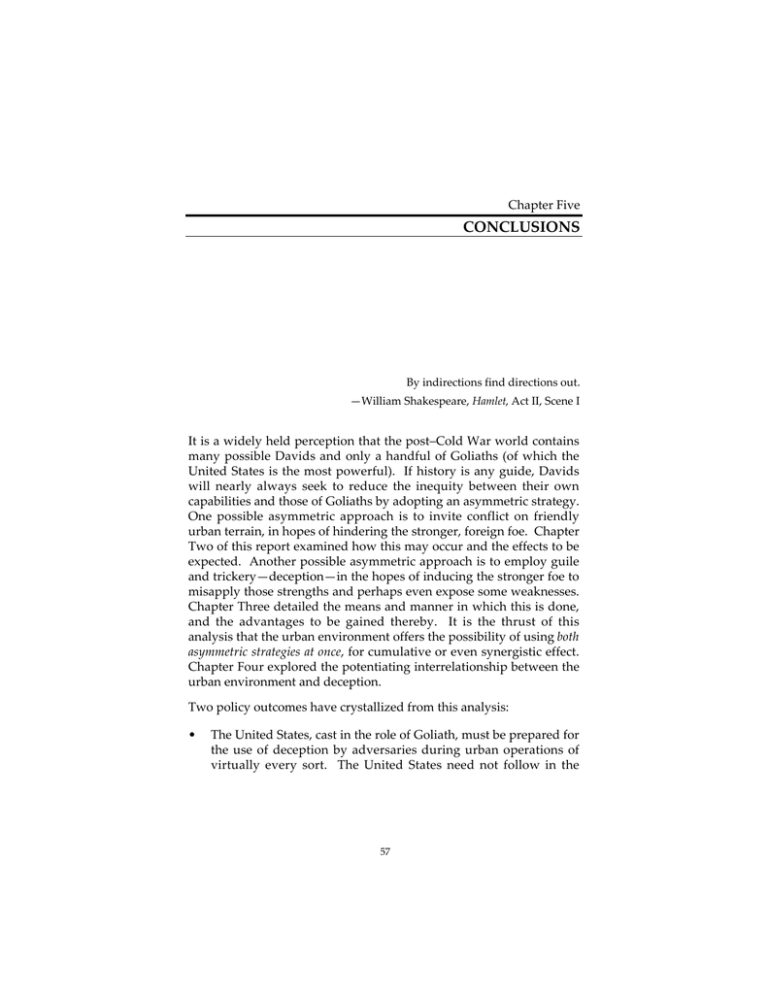
Chapter Five CONCLUSIONS By indirections find directions out. —William Shakespeare, Hamlet, Act II, Scene I It is a widely held perception that the post–Cold War world contains many possible Davids and only a handful of Goliaths (of which the United States is the most powerful). If history is any guide, Davids will nearly always seek to reduce the inequity between their own capabilities and those of Goliaths by adopting an asymmetric strategy. One possible asymmetric approach is to invite conflict on friendly urban terrain, in hopes of hindering the stronger, foreign foe. Chapter Two of this report examined how this may occur and the effects to be expected. Another possible asymmetric approach is to employ guile and trickery—deception—in the hopes of inducing the stronger foe to misapply those strengths and perhaps even expose some weaknesses. Chapter Three detailed the means and manner in which this is done, and the advantages to be gained thereby. It is the thrust of this analysis that the urban environment offers the possibility of using both asymmetric strategies at once, for cumulative or even synergistic effect. Chapter Four explored the potentiating interrelationship between the urban environment and deception. Two policy outcomes have crystallized from this analysis: • The United States, cast in the role of Goliath, must be prepared for the use of deception by adversaries during urban operations of virtually every sort. The United States need not follow in the 57 58 The Art of Darkness: Deception and Urban Operations biblical Goliath’s footsteps and be brought low by an opponent’s asymmetric approach. • While it is true that the United States will most often be operating in foreign urban environments, this in no way precludes U.S. forces from employing their own asymmetric strategy to great effect, using deception to curb the advantages of future urban adversaries. The first outcome prescribes important measures for U.S. forces: preparing—in training and simulations, in intelligence collection and analysis, in technological development, and in doctrine—to perceive and counter enemy deception efforts. In Charlie Beckwith’s oftquoted words, “You fight the way you train.” This means that to resist deception on the urban battlefields of the future, U.S. armed forces must face deception at all levels in urban exercises and urban simulations. This is true for intelligence analysts as well, who should practice on discerning not just signal from noise in urban environments, but signal from spurious signal and noise. For both of these goals, experimentation is critical to gauge the costs and effects of deception use by hostile forces. Experimentation can also be a useful setting to vet novel technology, particularly new sensors and information technologies. These pose an interesting challenge: more information is not necessarily better information, and thus increasing the security and credibility of intelligence-collection technology is as important as increasing bandwidth. Cities of the world vary greatly in the technological resources present that may be drafted into use by combatants; high- and low-tech urban settings offer different backdrops against which to experimentally measure the utility of various forms of deception. Finally, doctrine—which articulates and distills the hard-won wisdom of battle—must also better appreciate the historical power of deception in urban operations. Service and joint doctrine on urban operations should account for the challenge of deception just as they account for other vital components of warfare. The second outcome of this analysis engenders an objective for defense policymakers: prepare to counter the asymmetric approach of the urban adversary with an asymmetric approach of our own. Why should the United States cede the application of guile and cunning to its adversaries? Conclusions 59 When advancing upon Berlin in the closing days of World War II, the Soviet High Command ordered the massive employment of deception measures in order to gain operational and tactical surprise, reduce casualties, and offset German home-ground advantages (Matsulenko, 1974; Glantz, 1989). This is precisely the model of deception use that this report recommends for U.S. forces operating overseas. As has been discussed, the force in possession of the city, with time to prepare and a friendly noncombatant population, gains significant advantages over an invader (regardless of mission). The use of deception by the invading force may reduce those advantages dramatically by misdirecting and confusing the adversary as to the time, location, manner, and other aspects of operations. This hypothesis needs to be experimentally examined and measured. Additionally, the United States possesses unrivaled advantages in emerging information technologies, allowing deceptions never before possible. In short, although a massive frontal assault may bloodily turn an enemy out of a prepared position in the city, if a wellorchestrated deception can accomplish the same thing without a shot being fired, does it not present a powerful resource to be tapped?
